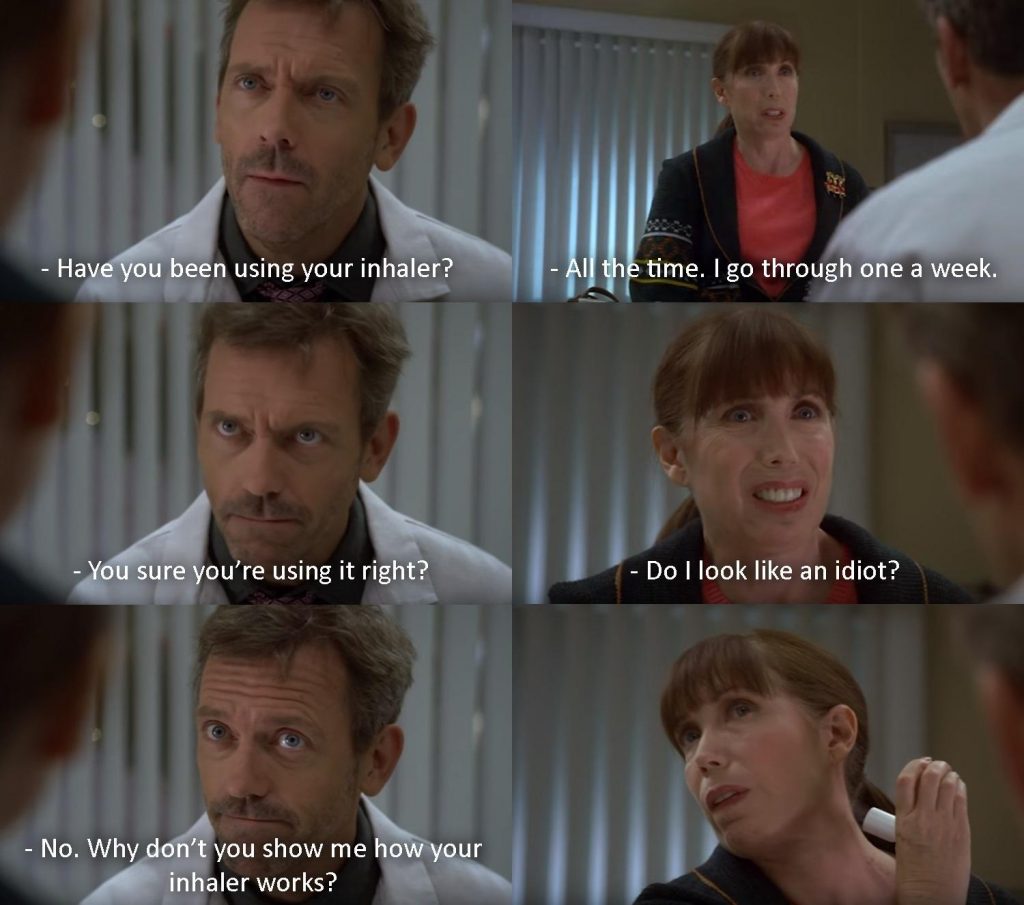
Hours-long procedural dramas follow the same boring structure
By Nicholas Cervania, December 4 2020—
So I’ve been watching a lot of House recently, and I’m getting kind of bored.

Don’t get me wrong, House can be pretty funny. But it demonstrates my problem with most of these types of shows — namely hour-long tv procedurals. Shows — like NCIS, or, Hawaii Five-O, that follow the same basic structure for most of the episodes. Now if you ask me, these types of shows are some of the lowest forms of television, just above reality TV, but slightly below multi-camera studio audience sitcoms.
So what are some of the problems with these types of shows?
First off, the subplots don’t matter. And I’m not just talking about the B and C plots for each episode, I’m also talking about the overarching plots, the ones that will go on for several episodes. For those of you who are unfamiliar with screenwriting, the “A story” of an episode is the primary focus, usually with the most amount of screentime. The “B” and “C” story is a parallel storyline that’s told alongside the A story. In most procedurals like Castle or Psych, the A story will be centred on the mystery-of-the-week plot, while the B and C stories are focused on the leads and their personal lives.
Overarching plots in these shows will have a character go through something for a few episodes, and you might think it will have a permanent effect on their character. But then the storyline will just end and nothing will change. Or maybe something does change, but only for a few episodes before things are back to the status quo.
For example, in the third season of House, House regains use of his leg. “Wow! That’s amazing! What’s gonna happen?” Nothing. Nothing happens. After a few episodes, his leg just decides to stop working again and this plotline ends up affecting the show as a whole in no way whatsoever.
I can’t tell you how many episodes focus on Dr. Taub and his relationship with his wife, which ultimately goes nowhere and just ends.
Likewise, in Season 3 of NCIS: Los Angeles, we find out that before working with Kensi, Deeks had sworn off working with female partners. “What? That’s so weird, why is that? I wonder what kind of ramifications or premises this concept will create!” None. This subplot is only mentioned once and is never brought up again. If it’s not important to the story at all, why even mention it?
Overarching plots are rare, with shows mostly opting to resolve introduced subplots by the end of the same episode. These shorter episode-long subplots will usually have high stakes that seem like they would have an adverse effect on the show. But since they never do, there’s never any tension. These kinds of subplots exist to flesh out and reveal more insight about the show’s characters, but these characters never develop from them in a lasting way. For the most part, characters are very static — maybe having a trait or two subtly added or changed throughout the show’s lifetime.
On the other hand, similar shows have been shown to be capable of creating overarching plot threads well. Lucifer is another show that has mystery-of-the-week premises for each of their episodes. It might sound strange that I’m using Lucifer as an example of a good show, since some would consider it to be an hour-long procedural. However, unlike other shows with this structure, the mystery of the week is almost never the focus of the story. Most of the time these are actually the B or C plots. In Lucifer, the A story almost always involves Lucifer continuing a plot thread that was left dangling in a previous episode. Plus, in Lucifer the formula is hardly apparent, with each episode having different story beats from the last. Lucifer is hardly an hour-long procedural, and I personally think it shines as one of the best in its genre. It’s not a mystery-of-the-week show with side plots, it’s a plot driven show with some mystery-of-the-week on the side. This is how you have subplots that matter — subplots that permeate through several episodes and have lasting and noticeable effects on the plot and characters.
Speaking of the mystery-of-the-week formula, Scooby Doo! is a show that comes to mind. But if you ask me, Scooby-Doo! Mystery Incorporated is the definitive run of the franchise. For those of you who don’t know, Scooby-Doo! Mystery Incorporated was a show that ran for two seasons from 2010-2013. This version of the classic show is unique, however, in the sense that it uses a serial format rather than the procedural format Scooby Doo is known for. Instead of focusing on a different mystery every week, the show focused more on storylines and character development, with a greater emphasis on an overarching plot. I remember getting really into this show as it was airing. I wanted to know who Fred’s real parents were, how his actions and obsessions with mysteries were affecting his relationship with Daphne and the romantic development of Shaggy and Velma, with their relationship driving a wedge between him and Scooby. These concepts might sound ridiculous to someone who hasn’t seen the show, but trust me, it’s incredibly well executed. Overarching plotlines are impactful, with character development being meaningful and lasting. This show is an example of how moving away from the procedural format could lead to better storytelling, resulting in a much more engaging and entertaining experience.
Almost every episode of an hour-long procedural will follow the same plot structure and hit the same exact beats. It makes the show boring and predictable. I get that that’s part of the appeal of these shows, but it doesn’t really excuse the issue, and as I mentioned before there are shows that can still be engaging while adhering to a general formula. Sure there are episodes that break this mystery-of-the-week formula, and these episodes are usually pretty good.
For example, House has a few episodes that focus on Wilson and Cuddy, putting House in the background as he solves a case we know nothing about. These episodes are pretty interesting, and it’s entertaining to watch the traditional story structure take place from a different perspective.
But that’s my issue — you shouldn’t praise a show for doing the bare minimum. Like yeah, every episode should be different so that the characters or plot can explore something new. Sounds pretty simple, right? But if you’ve seen these shows, you’d probably agree with me that most of them don’t.
So why do these problems exist? Well, it’s because of the way they’re written. Hour-long procedurals are probably the easiest and most popular shows to write speculative, or spec, scripts for. Spec scripts are written for free by screenwriters outside the studio in the hopes that the producer, production company or studio will purchase it. So once the general formula has been established, it’s easy for external writers to write spec scripts that are submitted to the show. Usually, these spec scripts are tweaked or rewritten to better fit the writing team’s ideas, but for the most part when a spec script is bought, it will retain the same general premise. And since spec scripts are written by different writers, it’s difficult for them to incorporate long overarching plot lines since they wouldn’t get to write how they end or continue.
Overall, I don’t think anyone’s surprised by this opinion. These shows obviously aren’t trying to make anything noteworthy. If you’re a really passive viewer and you enjoy these shows, that’s fine. There’s definitely worse shows out there to enjoy. But you’re going to be missing out on some good TV.
This article is part of our Opinions section and does not necessarily reflect the views of the Gauntlet’s editorial board.
